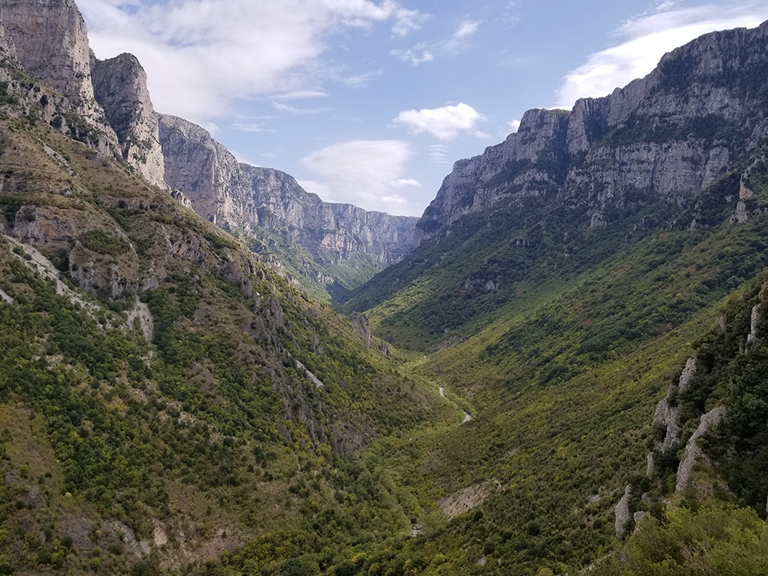

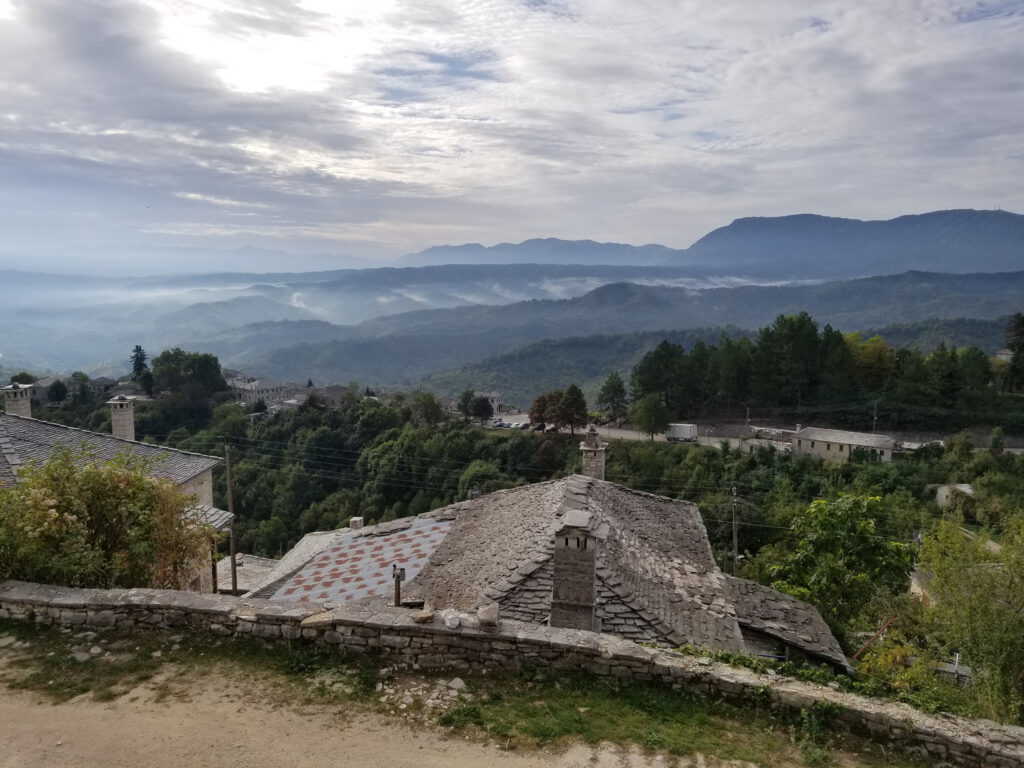
The second day was planned for Vikos Gorge. The trek goes from Monodendri village to Vikos village. There are 46 small villages in Zagori, all of which bear the name Zagorohorio. The term Zagori itself is of Slavic origin, as are the names of many of those villages – Tsepelovo, Vitsa, Metsovo, Kapesovo and others. The question that arises is where the Slavic toponyms in this area come from ? Does it come from the settlement of Slavs in the Balkans during the 7th century or from a later period?

All villages have similar architecture. Houses and streets are built out of stone.

Each village has a church, with a separate bell tower.
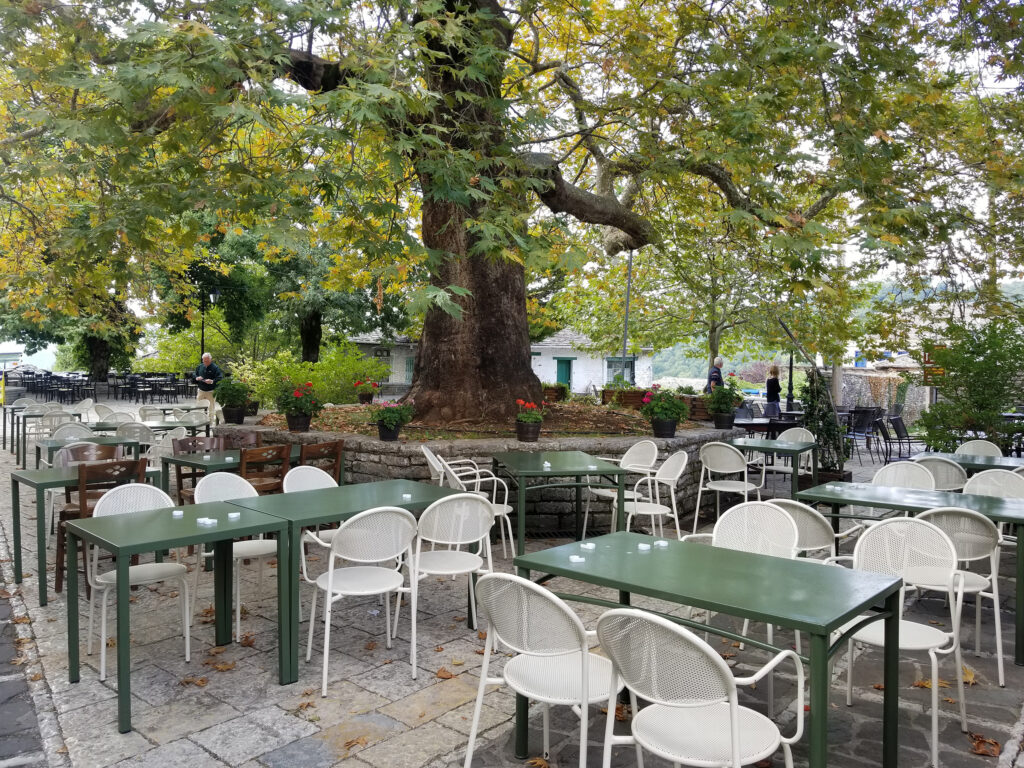
…and the main square, with a large tree in its central part.
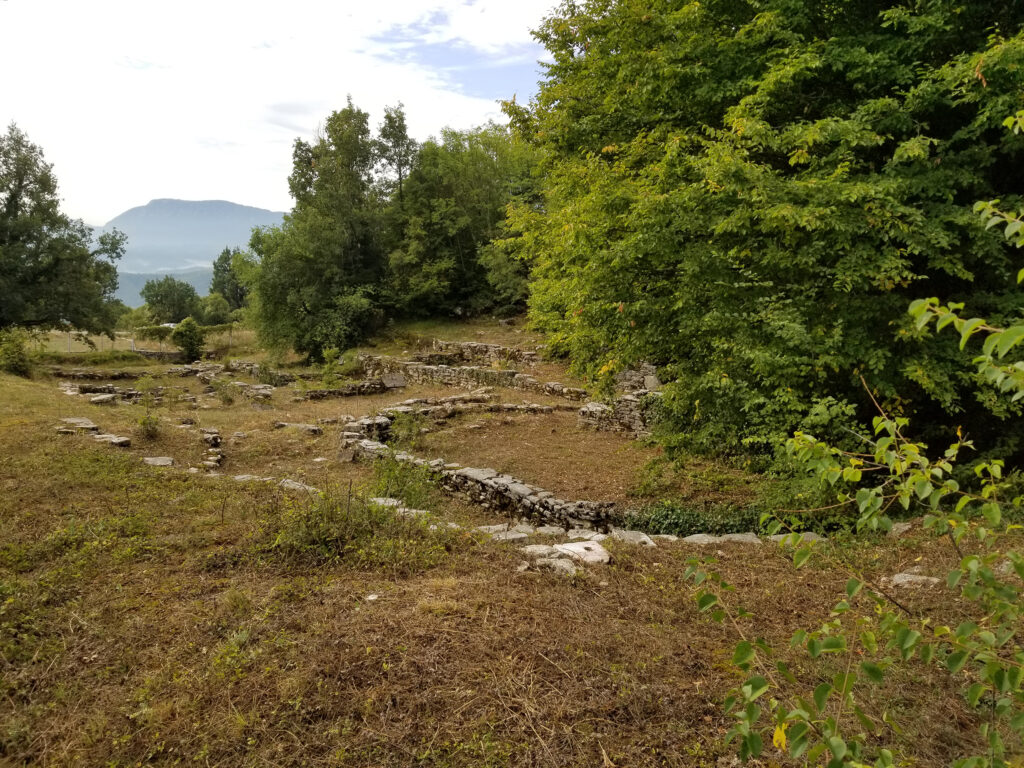
Between Monodendri and Vitsa there is a small ancient site. In ancient times, Zagori was inhabited by Molossian tribes, who built their kingdom here. According to Greek mythology, after the Trojan War, Achilles’ son Neoptolemus came to Epirus, where he defeated the Molossians and became their king. Andromache, Hector’s wife, who was killed by Achilles in a duel, fell to Neoptolemus as a war trophy. There Andromache bore him a son Molotus, who is considered the progenitor of the kings of Epirus, whose line goes all the way back to the Epirus king Pyrrhus of the later Hellenistic period. Olympias, the mother of Alexander the Great, was also of Molossian origin.

Above the Vikos Gorge, next to the village of Mononderi, there is the monastery of Saint Paraskeva.
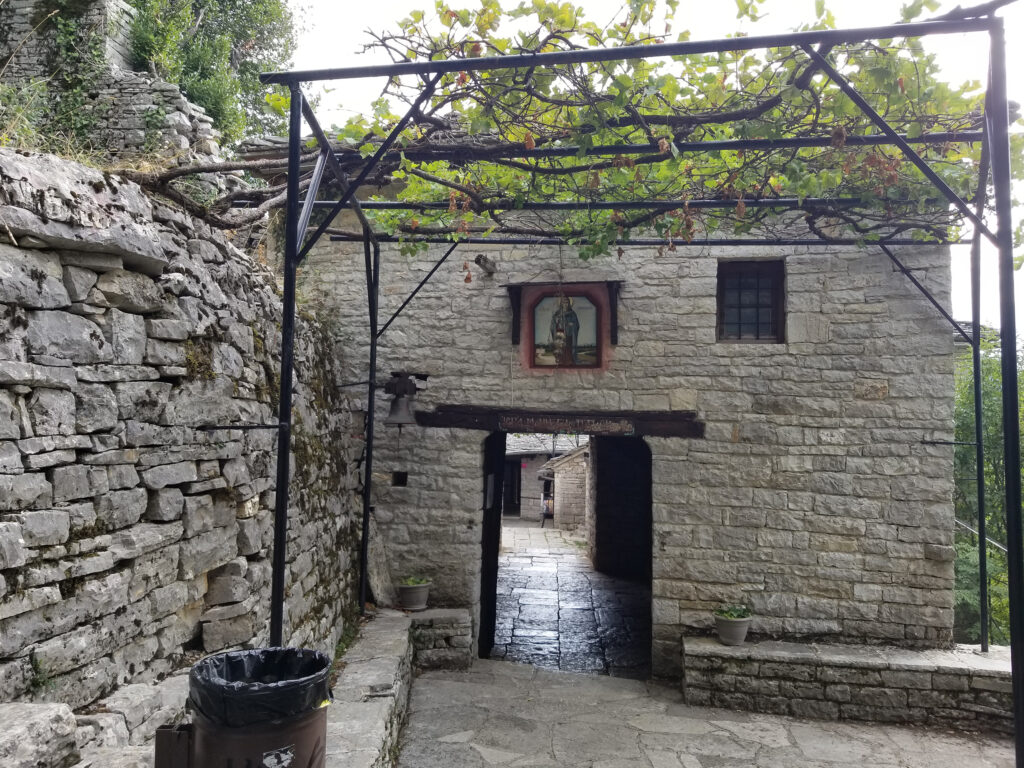
The monastery was built in 1412 and its founder is considered to be a local nobleman, Duke Michael Therianos, who was a vassal of the Count of Kefalonia and Epirus despot Charles I Tocco. Duke Mihajlo dedicated the monastery to Saint Paraskeva, because of her miracles, with the help of which his daughter was cured of an eye disease.

The fresco in the interior of the church depicts its founder Duke Michael, his little daughter who healed her eyes, his son and wife Theodora, who wears a white scarf around her neck, which was the custom in the time of Epirus despots.
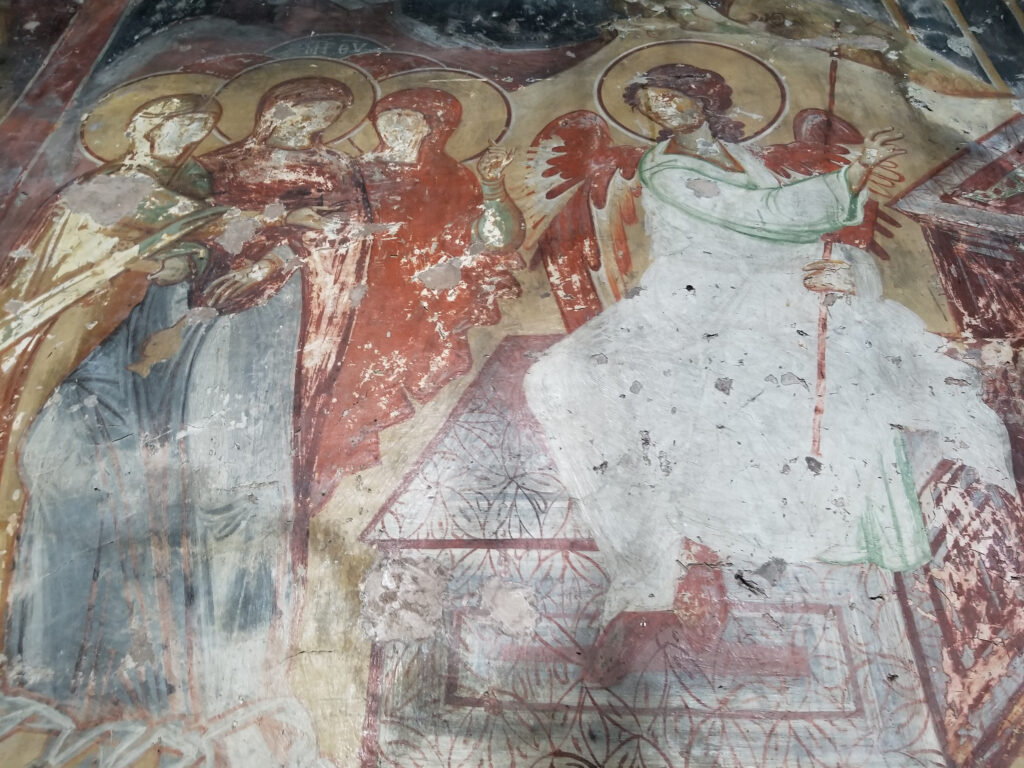
One fresco depicts a White Angel.

From the village of Monodendri, a path descends into the Vikos Gorge.

The path through the gorge is well maintained, marked and is not physically and technically demanding.

The trail is part of the much longer Epirus Trail.

The length of the trail walk through the gorge is about 10 km.

The river Vikos passes through the gorge, which has dried up in September.
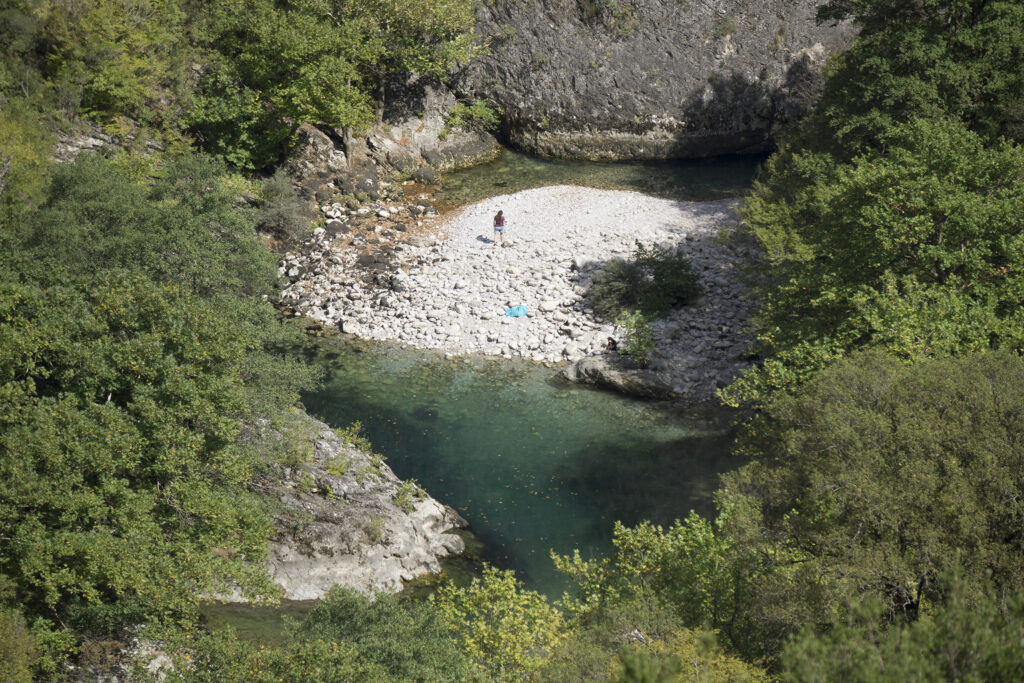
At one point, the source of the Voidomatis River appears in the canyon.
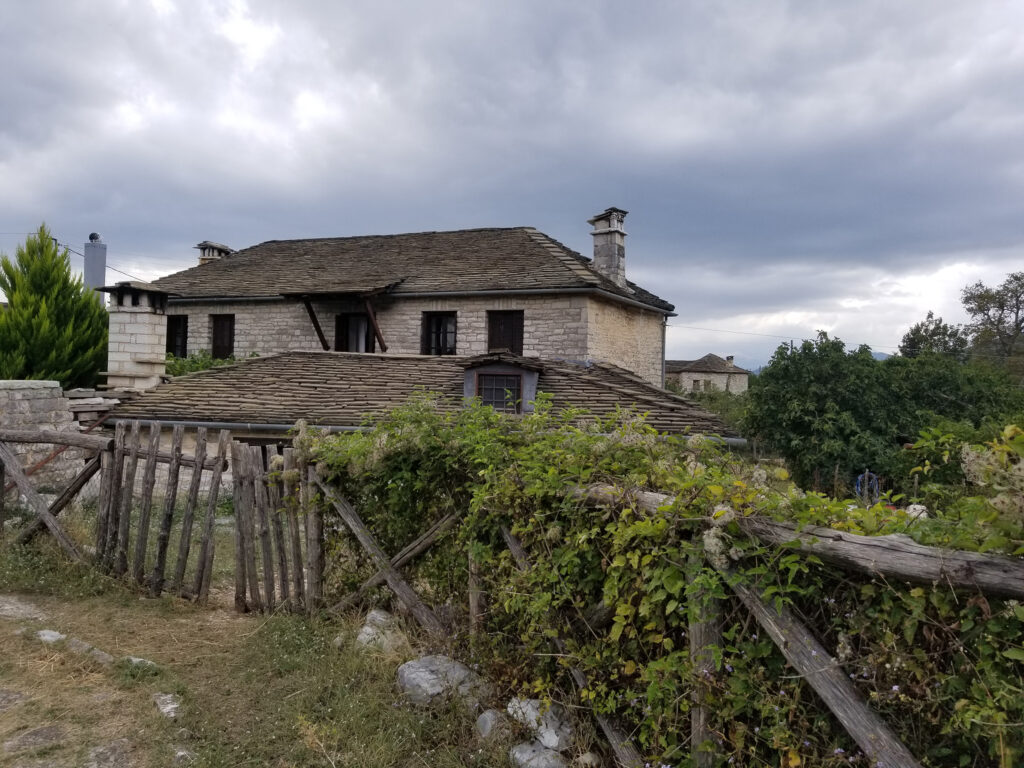
Exit from the canyon can be made into the village of Vikos, or continue further to the villages of Megalo or Mikro Papigo.

The most beautiful view of the canyon is from the village of Vikos.
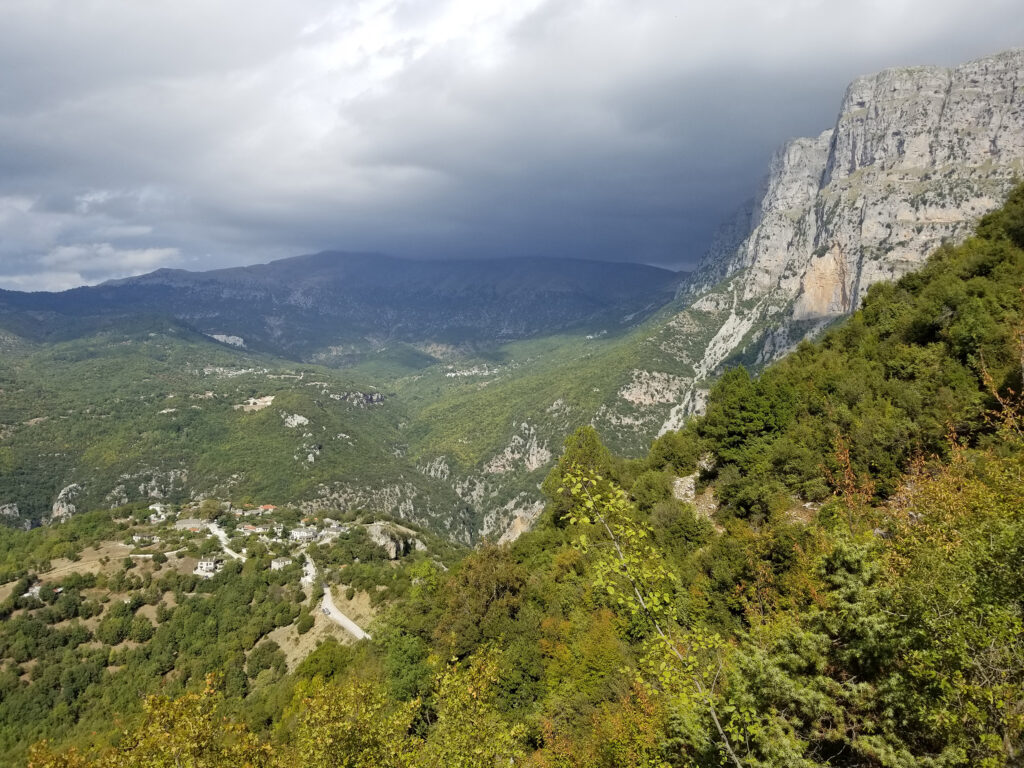
From Vikos to Monodendri, one can return by the surrounding road. Here you can see the viewpoint above the village of Vikos.

Returning via the surrounding road is easier and faster than going through the gorge.

The road leads to the village of Elafotopos and from there to Monodendri.
Author of text and photos is Bojan Ivetic who visited Vikos Gorge in September 2019.

Over 160 stone bridges were built on the territory of Zagori during the 18th and 19th centuries from period of Turkish rule. Tra
Read More
Most popular hiking trail on Mountain Tymfi starts from village Micro Papigo, from which you can climb to the peaks Astraka (2,4
Read More